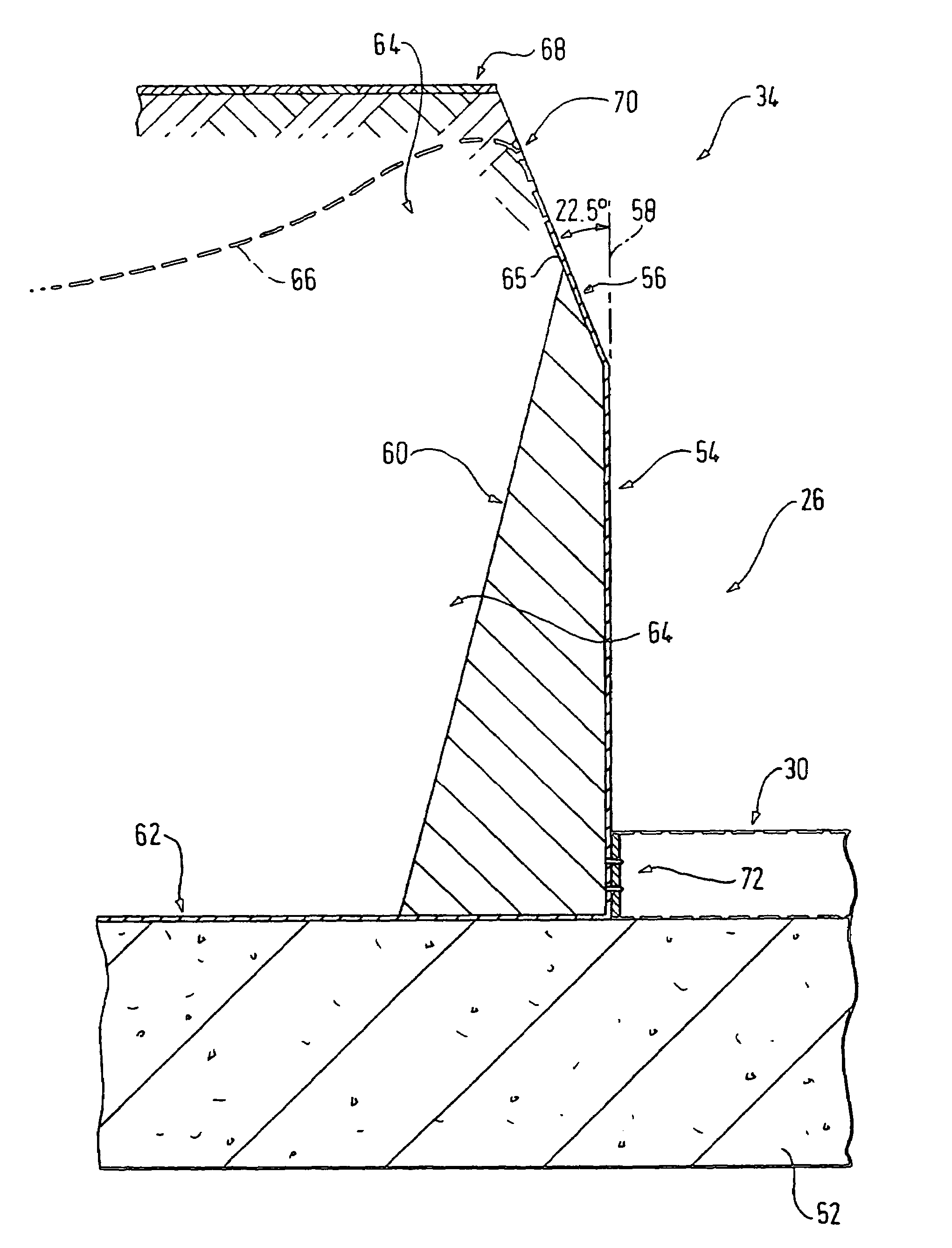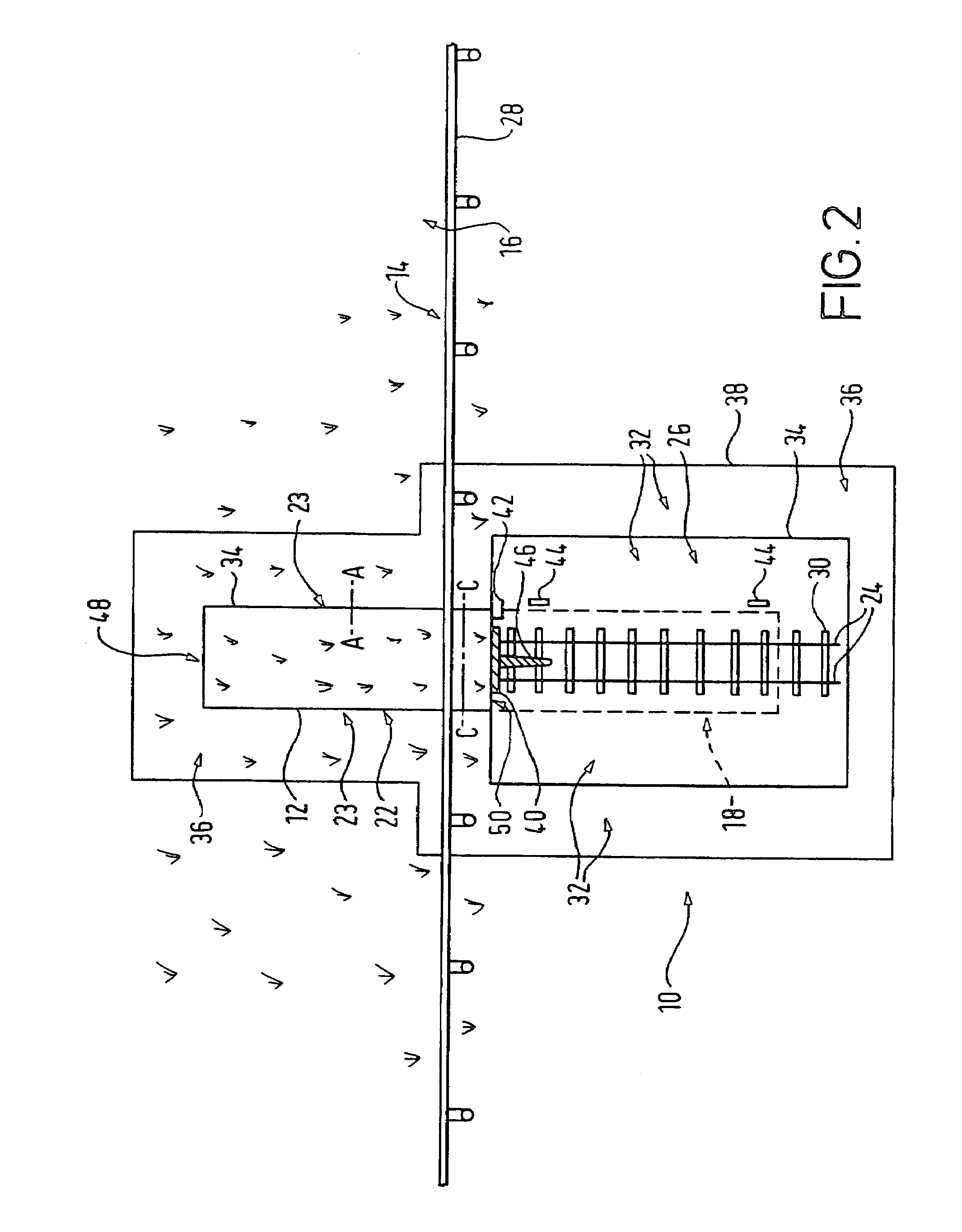Activity surfaces
a technology for activity surfaces and surfaces, applied in the field of activity surfaces, can solve the problems of wear and tear on the activity surface contained within the venue, affecting the upkeep affecting the operation of the activity surface, so as to achieve easy replacement, minimise the amount of wear, and easy control
- Summary
- Abstract
- Description
- Claims
- Application Information
AI Technical Summary
Benefits of technology
Problems solved by technology
Method used
Image
Examples
first embodiment
[0079]Referring now to FIGS. 1 and 2, a turf tray moving system 10 of the present invention comprises a movable turf tray 12 which is arranged to be movable, substantially at right angles to an edge 14 of a racetrack 16, between two locations each representing a different racetrack mode. In a non-race (open) mode, the turf tray 12, at a first location 18 (FIG. 1), is spaced apart from a gap 20 in the turfed racetrack 16. In a race (closed) mode, the turf tray 12 at the second location 22 (FIG. 2), is adjoined to edges 23 of the racetrack 12 which define the gap 20 and accordingly fills the gap 20. In this embodiment, the turf tray 12 is provided on a wheeled platform (see FIGS. 5a to 5d and 6a to 6d) and is movable between the first and second locations 18, 22 by way of guide rails 24.
[0080]The turf tray moving system 10 is provided within an excavated pit 26 which partially overlaps a portion of the racetrack 12 (the edge 14 of the racetrack 12 being defined by a running rail 28). ...
third embodiment
[0122]In contrast to the previous two embodiments, the third embodiment does not employ overlapping angled turfed edges. The first and second edges 218, 222 of the racetrack 206, the leading and trailing edges 216, 220 of pallet no. 1200 and the elongate side edges 228 of pallet no. 2202 all comprise substantially vertical complimentary engagement surfaces. In this case, the flexible edge reinforcement material extends vertically from the ends of the turf tray upstanding side walls to provide support for the flexible edges 216, 220, 228 of each turf tray 200, 202. The flexible edge reinforcement material is positioned so as to extend slightly over the vertical line of each upstanding turf tray side wall. This enables a good contact to be made between the sides of each turf tray 200, 202 and the complimentary flexible side walls 220, 228 of the other turf tray 200, 202 or racetrack edge 218, 222, when the two are brought together.
[0123]In the previous embodiment, is little or no rela...
PUM
 Login to View More
Login to View More Abstract
Description
Claims
Application Information
 Login to View More
Login to View More - R&D
- Intellectual Property
- Life Sciences
- Materials
- Tech Scout
- Unparalleled Data Quality
- Higher Quality Content
- 60% Fewer Hallucinations
Browse by: Latest US Patents, China's latest patents, Technical Efficacy Thesaurus, Application Domain, Technology Topic, Popular Technical Reports.
© 2025 PatSnap. All rights reserved.Legal|Privacy policy|Modern Slavery Act Transparency Statement|Sitemap|About US| Contact US: help@patsnap.com



